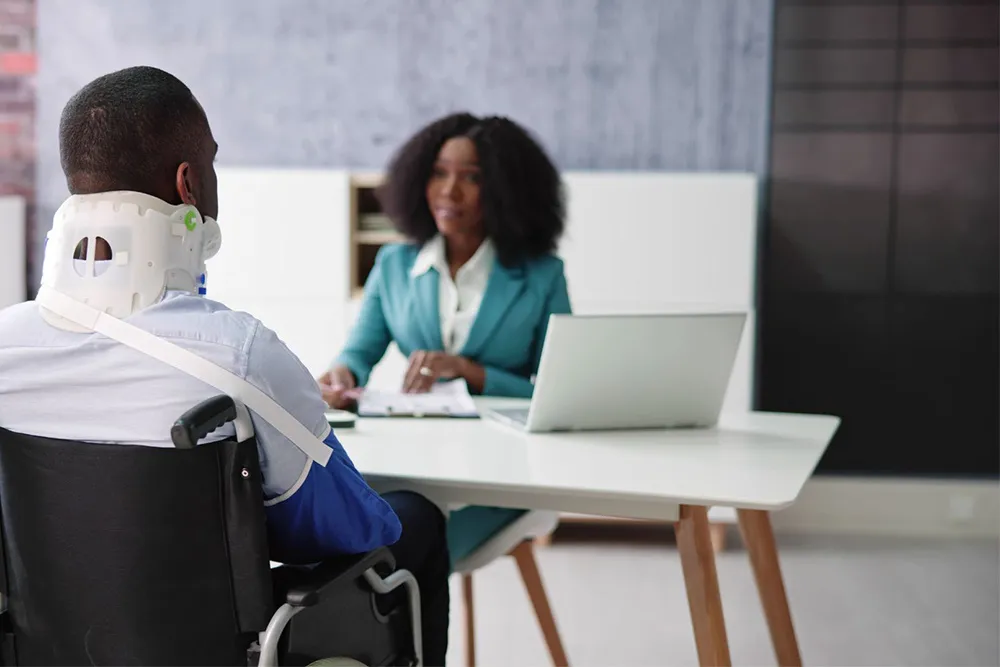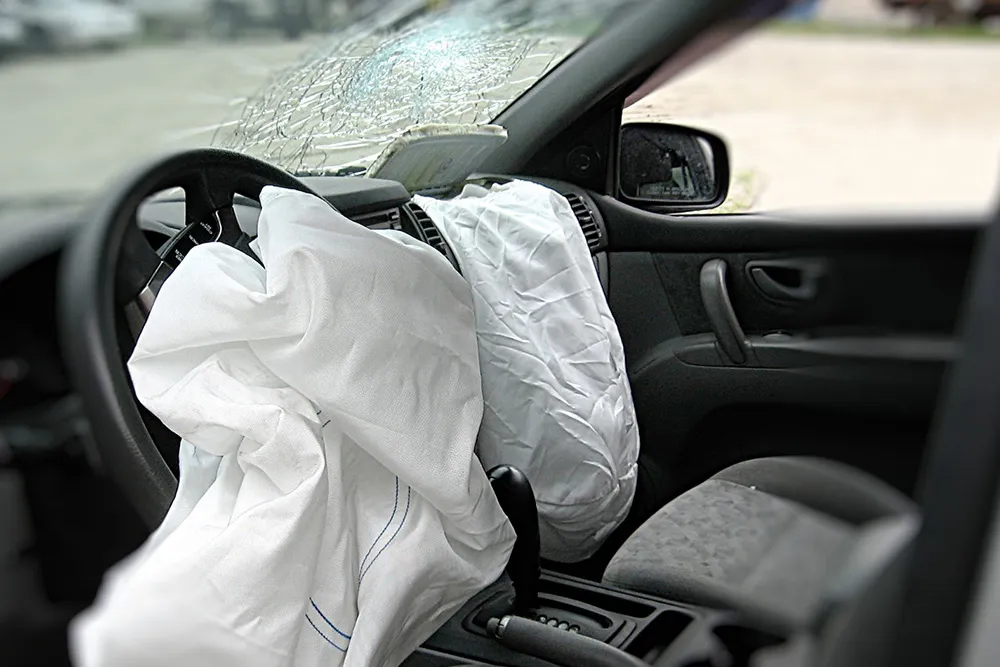While nothing can prepare you for the physical, emotional, and financial strain that comes with a personal injury, having a solid understanding of the personal injury compensation process and timeline in Florida can help you navigate your situation more effectively. It may seem daunting and scary at first, but the process of filing a personal injury claim and lawsuit, is a lot simpler than you may think. In Florida, a personal injury claim is typically processed within 9–18 months, but varies depending on the severity of your injuries, the insurance companies involved, and the amount of evidence associated with your case. In general, the timeline for personal injuries compensation follows the 10-step process below, which is broken down into 5 phases.
The 10-Step Timeline to Personal Injury Lawsuits in Florida
Navigating the legal system can be daunting, so to make it easier to understand the process of filing for personal injury compensation in Florida, we’ve created a 10-step timeline of what to expect going into this lengthy process.
Phase One – First Steps
1. Seek Out Medical Attention Immediately. The first step is to always seek out medical attention, regardless of how minimal your injuries appear to be. The shock of being in an accident will get your adrenaline pumping, which can dull pain symptoms for up to 48-hours or longer. Seeking out medical care immediately after an accident will ensure that you understand what type of injuries you’ve sustained, what treatment you need, and what ongoing care might look like if it’s needed.
Beyond making sure that you are okay, in stable condition, and protected from further harm, seeking out medical attention is an essential step in triggering the legal process for personal injury compensation in Florida. It makes a point to establish that you were in fact injured by the accident, and it showcases that the injuries were not from a prior condition. It does this by starting a solid trail of medical documentation for your personal injury case.
Phase Two – Pre-Filing & Contacting The Professionals
2. It’s Time to Contact a Personal Injury Attorney. Now that you’ve received medical attention, it’s time to contact a one of our personal injury attorneys. Having an experienced professional on your side can help you navigate the legal process of filing a personal injury claim, and we are invaluable when it comes to dealing with insurance companies. Most insurance companies will look to pay out the minimum amount of money possible, both to you and the other party involved, and as such, you may not get the full personal injury compensation you deserve. When you sign a contingency contract with us, we will work tirelessly on your case to investigate, gather evidence, and build a strong case for your claim.
3. Your Lawyer will Alert Your Insurance Company To The Accident. After seeking out medical attention, the second step is for your lawyer to alert your insurance company of the accident. This will kick-start the claim process, as the insurance company is required to investigate the claim associated with the accident, and determine who was at fault. It will also allow you to claim your Personal Injury Protection (PIP) benefits, which is coverage that can help pay for any lost wages or medical bills accrued.
4. Have Your Lawyer Investigate & Gather Information. Once you’ve retained one of our lawyers, the next step is to investigate the accident and gather evidence. This includes obtaining photographs of the accident scene, the make, models, and damage done to vehicles involved if it was a car accident, video surveillance and police reports, as well as, gather and review eyewitness testimony. In addition to this, medical bills and records, employment history and earnings are gathered, and a recreation of the scene may be done via reconstruction experts depending on the circumstances of the case. This process can take several weeks to complete, and should begin as soon as possible.
5. Send a Demand Letter to the At-Fault Party. After all evidence is gathered for your claim, a demand letter is drawn up and sent to the at-fault party. The goal of the document is to formally outline your case, to demand payment, and to notify the recipient that legal action will be taken if payment failure occurs. The document will explain why you’re in pursuit of a personal injury claim, and will discuss the relevant facts of the case, including:
a. Description of other party’s fault – utilizing gathered evidence from investigative phases.
b. Outline damages – medical bills, severity of injuries, cost of future treatment.
c. It may also include pain and suffering, lost wages, and more.
d. It will outline what type of settlement you wish to receive.
The idea of the demand letter is to settle the case amicably, without involving the courts. However, the opposing party can reject the demand letter, counter it, or accept it. The response time on demand letters is typically within 30-days of reception.
Phase Three – Filing a Lawsuit
6. File a Formal Personal Injury Lawsuit. Should your demand letter be rejected, or an undesirable settlement be offered in its place, it’s time to officially file a personal injury lawsuit in the form of a complaint. In a legal sense, a complaint describes the situation and emphasizes the liability, damages, and evidence mentioned previously in your demand letter. Keep in mind that a complaint needs to be filed in either the county where your injury took place, or the one where the at-fault party lives. Once you’ve done so, it will be delivered to the at-fault party and from here onward, they will be referred to as the defendant. At this point, the defendant will have a set amount of time to respond with their admittance, or denial of the testimony placed against them.
Phase Four – Pre-Trial
7. The Discovery Phase. In order to better help attorneys prepare as much as possible, the discovery phase involves the exchange of evidence between yours and the defendant’s lawyers. This includes witnesses, photos, videos and any evidence that is to be presented at trial. This may sound peculiar, but is meant to give both sides a fair chance to review all the accrued evidence and build their cases. This also ensures that all relevant information is being presented, making the final ruling as fair as possible.
8. Arbitration or Mediation. It is common for arbitration or mediation to be used in an effort to avoid having a trial, and can be done before, or even after a lawsuit has been filed. These alternative resolutions are faster and often facilitate agreements outside the courts successfully. When choosing between the two, it’s important to know what the key differences are and how they may affect you.
a. Mediation. Mediation can be requested at any time throughout a personal injury case, and is designed to defuse tension, allowing both sides to be heard. A mediator facilitates negotiations and encourages both sides to come to an agreement that suits everyone. However, these meetings are non-binding, meaning each side holds the right to accept or reject the offer on the table and progress the case accordingly.
b. Arbitration. Rather than attempting to come to an agreement together, parties can opt for arbitration. When this is the case, an arbitrator is hired to hear out the cases from both sides, then come to a final decision themselves. The person hired to do this could be a retired judge, an attorney, or even an expert in the field, but no matter who they are, their decision is both final and legally binding. Essentially, arbitration is like having a miniature trial with a private judge, but is kept outside the courts, making it faster and less expensive. A judge may even decide to send a case to arbitration if they believe the entire court process to be unnecessary in reaching a resolution.
Phase Five – The Trial
9. What If Mediation & Arbitration Fail? Possible Trial. If mediation and arbitration fail, then it may be necessary to take the case to trial. Going to trial means that the dispute will be heard by a judge and jury, who will decide how much compensation should be awarded. If the case goes to trial, this is the longest stage involved in a personal injury lawsuit, adding on an average of 3–6 months of additional time to the process.
Once the trial begins, the court will hear opening statements by both attorneys, followed up by testimony from eyewitnesses and expert witnesses. After this, cross-examination follows by the opposing party. Closing statements are then given, and the court is adjourned, so that the jury can review all the case facts.
Afterward, if one party is found liable, then they must pay out the amount ordered by the court, which is most often done via a settlement check. This check is sent to the plaintiff’s attorney’s office, from which attorney fees and costs are deducted, and the rest is distributed to the client. This settlement check can include compensation for medical bills, property damage, lost wages, pain and suffering, or other costs associated with the incident. Overall, if neither party is able to come to an agreement through mediation and arbitration, then taking the case to court may be your only option for receiving personal injury compensation in Florida.
10. The Losing Party May Choose to Appeal. If one party is found liable for damages and is not satisfied with the court’s ruling, then they may choose to appeal the decision. An appeal means that the case may be reconsidered by a higher court and re-evaluated based on new evidence or arguments presented. If an appeal is successful, it could result in the verdict being overturned or altered, giving the losing party, a more satisfactory result.
An appeal can take several months to hear before a final determination is made, so it’s important for those involved in a personal injury case in Florida to be aware of this possibility if negotiations fail. Ultimately, appealing a verdict should never be taken lightly, as it can require costly legal fees and could potentially add even more time to an already lengthy process.
Collecting On Your Personal Injury Compensation: Average Amounts Awarded
Once the court has ruled in your favor on a personal injury case, it’s time to collect your compensation. In most cases, the court will issue an order for the at-fault party to pay the compensation within a specified time frame. If it’s not paid in fully within this time, then court proceedings can be pursued to ensure that you do receive your due compensation.
Conclusion
When it comes to personal injury compensation cases in Florida, it is important to keep the possibility of an appeal in mind if mediation and arbitration fail. Going to trial may be necessary in order to receive compensation for damages, and should be considered by those who have been injured as a result of another party’s negligence or recklessness. If you believe that you may be eligible for compensation, our experienced lawyers here at Personal Injury of Florida can help guide you through the complex process of personal injury lawsuits. Give us a call at 561-507-5700 for a free consultation, and ensure you’re not leaving any compensation behind.
![]() June 13, 2023
June 13, 2023




